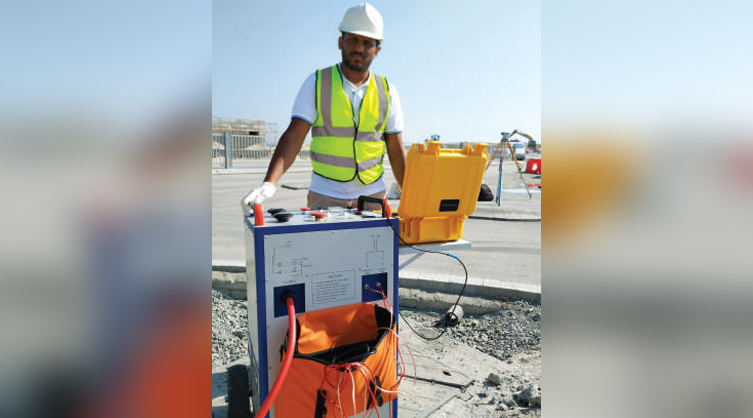Mastering cable fault location for uninterrupted electrical systems
By EPR Magazine Editorial October 7, 2023 10:49 am IST
By EPR Magazine Editorial October 7, 2023 10:49 am IST

Identifying and rectifying faults is paramount in electrical systems to ensure uninterrupted operation. Among these, cable faults can be particularly challenging to diagnose. Delving into this intricate process, we discover the multi-faceted approach to cable fault location.
Safety First
Before any hands-on activity commences, the golden rule is safety. The cable under examination must be power-free, thoroughly discharged, and entirely isolated.

Step 1: Diagnosis
The journey begins with gathering all pertinent information about the cable and the nature of the fault. Initial tests aim to validate and amplify this data. The insulation resistance between all conductors and the sheath is first on the checklist.
Subsequently, a Time Domain Reflectometer (TDR), like the Kehui T 907L, is employed to affirm the cable’s length. This device gauges the return time of a signal sent to the cable’s end. The distance is easily calculable given the known Velocity of propagation (VoP) for a specific cable type. The T907L’s 30V pulse ensures a range of up to 64km, aptly covering the majority of distribution cables in standard use.
Step 2: Pre-location
This stage zeroes in on the fault’s approximate location. While the TDR detects short or open circuits, a surge wave generator (SWG) like the Kehui T-305E is typically necessary. This SWG connects to one of the cable’s conductors and its grounded sheath. When charged to an appropriate high voltage, the SWG’s large capacitors discharge into the cable, temporarily converting the fault into a short circuit. This transformation aids the reflection of the TDR signal. Several factors might introduce inaccuracies at this stage, including the cable’s underground path, the VoP’s accuracy, and cable discontinuities.However, with the T-907L’s 200MHz sampling rate, ensuring an accuracy of ±500cm, these inaccuracies are mitigated to a large extent.
Step 3: Pinpointing
The final stage involves pinpointing, which narrows down the exact fault position. The T-305E, set in its cyclic mode, consistently breaks down the fault. In tandem, an instrument like the Kehui T-506, equipped with an electromagnetic detector and microphone, comes into play.
The fault’s breakdown generates an electromagnetic field around the cable, which the T-506 detects. The accompanying microphone identifies the sound of the fault’s breakdown. As the detector approaches the fault, the sound intensifies. Once the electromagnetic and acoustic waveforms converge and the fault’s noise peaks, the precise fault position is identified, paving the way for repairs.
Cable fault location, while intricate, is paramount to the safe and efficient operation of electrical systems. With advanced tools and a systematic approach, technicians can swiftly identify and rectify these faults, ensuring the longevity and reliability of electrical installations.
We use cookies to personalize your experience. By continuing to visit this website you agree to our Terms & Conditions, Privacy Policy and Cookie Policy.